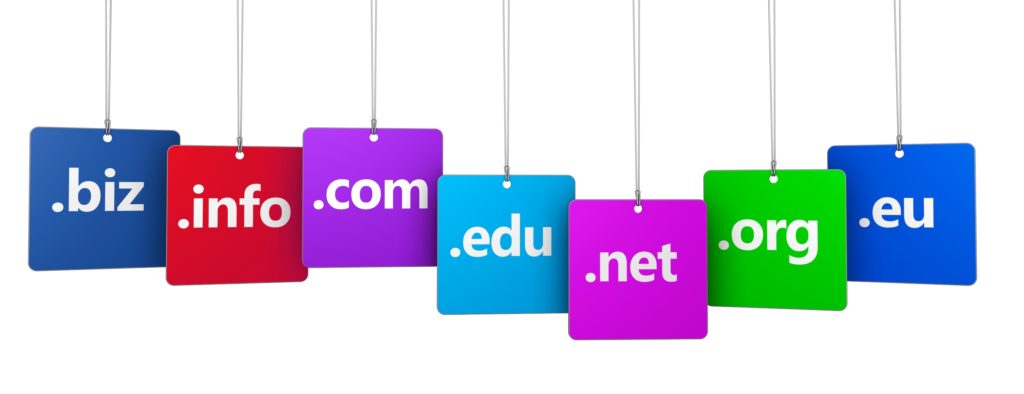What’s In a (domain) Name?
Dot Com, Dot This, Dot That – The Domain Name Game
When the Internet became popular in the 90s and domain names were plentiful, the standard practice was that businesses would get .com domain names, communications and other tech companies grabbed .net domain names, non-profit organizations took .org domain names, and educational institutions identified themselves with .edu domain names.
Those four identifiers are known as top level domains. There were three others government-related TLDs (.gov, .int, .mil) that non-government entities didn’t use. TLDs are controlled by the Internet Corporation for Assigned Names and Numbers. ICANN is a global multi-stakeholder organization that was created by the U.S. government and its Department of Commerce.
Now, domain names are popular and available ones that match a company’s name or purpose are difficult to find. One reason is that companies buy domain names in bulk from official registrars (Network Solutions, GoDaddy, HostGator, etc.), and then legally offer them for sale at sky-high prices. The thought process behind this is if companies really want a domain name, they are going to pay for it. Sometimes the domain holders are correct; often they are not.
The practice of mass-purchasing domain names and the public’s demand for variety prompted ICANN to regularly release new TLDs. This is where the domain-buying public needs to tread lightly; choosing the wrong TLD can give a company an identity they really don’t want.

According to the ICANN wiki (https://icannwiki.org), in October, 2011, the Australian parliament blocked its member’s access to .info domains. The move was made to protect against what they saw as a higher rate of malware in the .info extension. One commentator notes that the possibly higher rate of spam and malware could be attributed to the cheap price that .info domains were introduced for, which effectively made them the most cost-effective space for spammers and hackers. Today, the TLD is blocked by many email security services and corporate email systems.
Another pitfall is the use of international TLDs to incorporate into domestic domain names so that a word is spelled out in the domain name. Domains ending in .al, .ss, es, for example, may be thought of as innovative and unique, but those are the TLDs for Albania, South Sudan, and Spain, respectively. Using a domain name ending in those TLDs will most likely cause emails sent from addresses using it to be blocked. Also, many firewalls are configured to not allow visits to websites using international TLDs.
The examples given are not the only pitfalls of the domain name environment. There are many more that could derail your intentions for using the domain name of your choosing. If you are in this situation, give Dan Appleget at Quality Business Solutions a call at 410-337-3700. Dan has a long history of dealing with Internet domain name registration, website design and improvement, search engine optimization, and many other Internet-related communications endeavors.
Gary Abosch
Senior Director, IT & Service Operations
Quality Business Solutions
410-337-3700